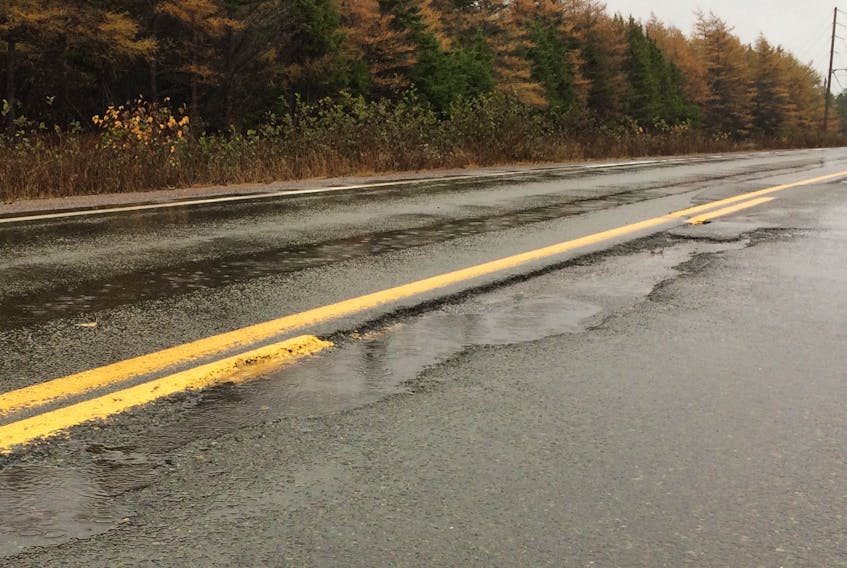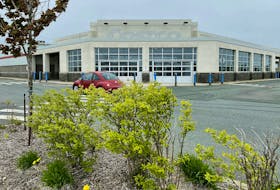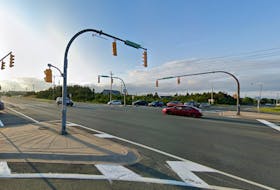MARYSTOWN, N.L.
They’re the glue that keeps the province running. Without roads, most everything would come to a standstill.
Government-provided services like health care and education are vital and used by everyone, Transportation and Works Minister Steve Crocker says, but to varying degrees.
“The reality is we all use roads, we all use road infrastructure, so it affects each and every one of us every single day,” Crocker acknowledged in a recent telephone interview with SaltWire Network.
Roads keep the province humming, but it’s certainly not a smooth ride for everyone.
Crocker knows that.
“It’s challenging, but we’ve made good strides,” he says.
Paramedic concerns
Derrick Dunne, a primary care paramedic and administrative assistant with Grand Bank/Fortune Ambulance Service Inc., is acutely aware of the importance of good roads.
Major work in two areas of the Burin Peninsula Highway between Fortune and Grouse, outside Grand Bank, this summer has made life easier for him and his colleagues, Dunne says.
There are still some trouble spots on the highway he would like to see fixed though, the area between the turnoffs for Frenchman’s Cove and Garnish being one. A section of the highway just past the old dump at Swift Current is also really bad, he says. Another one is the bridge near the turn off to North Harbour. Dunne says the ambulance has to almost come to a complete stop to safely navigate the bump.
When you’re travelling in an ambulance over a rough highway, it’s a safety issue, for both patients and healthcare practitioners, Dunne says.
“All the bouncing around and beating around is hard on the patient,” he says, particularly if they have a back injury or abdominal emergency.
Bumps affect cardiac monitors, as well, and can result in false readings when doing non-invasive blood pressure tests.
“Say if we’re starting an IV (intravenous), for example, right. We have to actually get the driver to tell us when they think we got like a 30-second or a minute spot where there’s no bump,” Dunne says.
“We could never start an IV from Fortune to Grand Bank (before the recent upgrades), I’ll be honest with you. If you got one, you were lucky.”
Bad for business
Boyd Smith, owner of Smith’s Store in the Random Island community of Petley, says pothole-filled roads are bad for business.

There’s a marina in the town and people who bring their boats there during the summertime visit the store to stock up or use the washroom. Sales have been way down, however. Smith blames the condition of the road between Britannia and Petley.
“Our business really hurt this summer, and last summer, the last two summers,” Smith says. “Why would people drive up over a bad old road and probably wreck springs and stuff when they can go somewhere else.”
Smith said the Department of Transportation and Works filled up some of the potholes in the area a couple of weeks ago.
“They came here, filled up a few holes, but said they ran out of materials and they’d be coming back, but they never came back,” he said.
Because some of the potholes are filled and others are not, Smith says its deceiving to motorists, as was the case with one man he said was at the store recently.
“He hit (a pothole) after dark, and he busted his rim and punctured the tire,” Smith said.
Tourism deterrent
People often ask Burgeo Haven owner Dorim Keeping about the condition of the Burgeo Highway, so much so it seems almost as if everybody knows the road is in bad shape, he says.
Keeping has owned the bed and breakfast since 2002.
“(The highway is) definitely a deterrent, there’s no doubt about it,” he said.
Some people who really want to visit the community — perhaps have it on their bucket list — will come regardless of the road. Others, however, will avoid the journey. Social media, which definitely helps tourism, can also hurt it, Keeping said.
“You get one or two potholes in the road somewhere and someone gets a flat tire, it gets on Facebook,” Keeping says.
Keeping feels the Burgeo Highway is not a high priority for government, a “bastard child,” to use his words.
“We’ve had bits and pieces fixed up here and there, but on the overall, they need to come in and put some money out,” he says.
Treated equal
Keeping says he would like to see less extremes in the conditions of the roads around the province. Everyone should be treated equally, he said.
“Why do we always have to be like a child who is crying out all the time for good roads? That’s the frustration. People will say, ‘Well, you ought to have seen it last year. You got it good now. There (are) only 1,001 potholes,’” Keeping said.
“You become complacent after a while. Almost as if we accept the fact that we’re deserving of inadequate roads.”
With a small population and so much highway in between them, Smith said he understands the challenges government faces. Still, he said the roads in his area were kept up pretty good until the last couple of years.
“It seems like they haven’t got the money or they’re not spending the money now or whatever,” he said. “I guess the main highway naturally is the main thing and the rest of the byways got to put up with the bad roads.”
Dunne knows, too, making everyone happy would be impossible.
“But when you’ve got really, really bad sections, they got to start opening their eyes up and doing something,” he says.
Roads plan
The Department of Transportation and Works is interested in hearing the concerns of people throughout the province, Crocker says.
In the winter of 2017, the department introduced its five-year provincial roads plan, an annually updated road map of work to be done.

The plan is currently in the process of being updated and the public can provide input via a form at the engagenl.ca website. Details of the five-year plan are available on the department’s website.
“It’s very important to get to the people who use the roads,” Crocker said.
According to Crocker, 100 per cent of the work to be done in the 2018-19 construction season was identified this past January, along with 75 per cent for 2019-20, 50 per cent for 2020-21 and 25 per cent for 2021-22.
The process underway now will update everything by 25 per cent, so that all projects for the 2019-20 season will be identified and released in January, 75 per cent of projects for 2020-21 will be in place and so on.
The 25 per cent is added based on developing issues, and input from engineers and the public.
A continual plan that looks five years ahead has many benefits, Crocker says, one being earlier tendering. Money saved this year because tenders went out sooner was re-invested in projects that would have been done next year, he said. It also helps give the public a better idea of when road work is going to be completed in their area.
Maintaining roads is a constant struggle, Crocker acknowledges. The construction season is short and there is a lot of road to maintain.
Newfoundland and Labrador is also a young province, Crocker points out, and major road construction and paving really only started in the 1960s.
“A lot of our pavement is at the same age, so it’s sort of all of our infrastructure is wearing at the same time,” he said.
Asphalt testing pilot project
Transportation and Works Minister Steve Crocker says it’ll be a while longer before serious data starts coming in from the province’s asphalt testing pilot project.
For the project, five areas of the Trans-Canada Highway between Foxtrap and Holyrood were paved using different types of liquid asphalt.
The project, which aims to determine which asphalt specifications best suit Newfoundland and Labrador’s climate and environment, started about a year ago, Crocker said.
“The engineering staff here in the department tell me that they really expect to start seeing differences and structural changes somewhere in the 24-month range,” Crocker said.
The lifespan of asphalt varies and can be argued but typically is 12 to 15 years, he said.
“Right now, at one year in, we’ve looked at it a couple of times, but we’re not really getting any significant data from that yet,” Crocker said.
“It’ll be in the next, I guess, two- to three-year range we should really start to see the difference in the different mixes and the compactions that we used.”
By the numbers
10,000 — Approximate kilometres of roads serviced by the Department of Transportation and Works
600 — Approximate number of lane kilometres paved in 2017
800 — Approximate number of lane kilometres paved in 2018
$77.2 million — The amount of money allocated for road infrastructure work in 2018-19, not including the Trans-Labrador Highway, Team Gushue Highway and Sir Robert Bond Bridge









